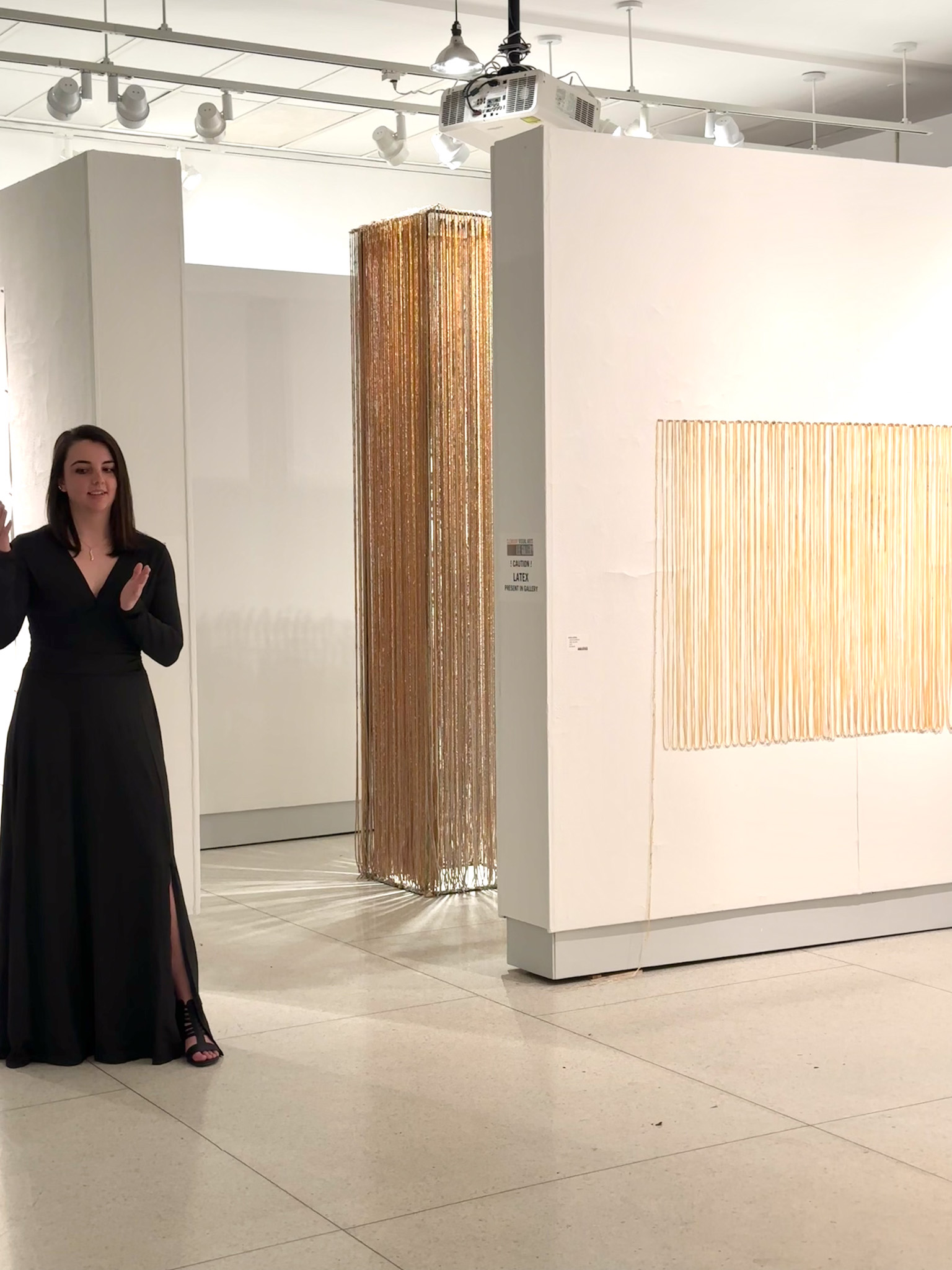We recently connected with Emily Collins and have shared our conversation below.
Emily, looking forward to hearing all of your stories today. Any thoughts around creating more inclusive workplaces?
As a woman in the fine arts industry, more so as a metalworker and blacksmith, I immediately take into consideration the inclusivity of myself and other women in these spaces. This is a male dominated industry, especially in a welding or blacksmithing studio. My advice to create a more inclusive space would, first and foremost, be to promote the recognition of the women creators. Only about 13% of living artists being represented by galleries are women, women’s art appears less frequently than men’s at auction, and women artists earn about 47% less than men do. Displaying women’s work and promoting their achievements through galleries and exhibitions as equally as men is a straightforward solution to this. Creating safe spaces, support networks, and providing training and mentorship will elevate inclusivity as well. Safe spaces and environments can be made through open discussions and feedback. Don’t be afraid to ask a studio or workplace about their harassment policies! Furthermore, training can be done through workshops and programs that can help women connect with other professional artists to gain knowledge and support.
Fortunately, my personal experiences in these creative spaces have been positive overall. I’ve worked in classrooms, metal studios, and wood shops in the Clemson and Greenville, SC areas and have connected with wonderful people. The most impactful places have been The Artistry in Greenville, SC and Clemson University. I came to Clemson with experience in welding and fabricating but was quickly introduced to blacksmithing by a friend in the art department. Throughout this process of connections and support, I was led to The Artistry blacksmithing studio where I was immediately welcomed and was taught the basics of blacksmithing. I was included in the community, events, and even some projects. The Artistry and Clemson University are safe and supportive environments that have brought me to where I am in my metalworking and artist career.

As always, we appreciate you sharing your insights and we’ve got a few more questions for you, but before we get to all of that can you take a minute to introduce yourself and give our readers some of your back background and context?
I earned my BFA from Winthrop University in 2021 and my MFA from Clemson University in 2023. I taught myself how to draw when I was 10 and continued until undergrad, started studying sculpture and photography at Winthrop, and continued with my sculpture studies at Clemson. My very first time welding was my sophomore year at Winthrop where my sculpture professor said I was a “natural welder.” He was constantly supportive and motivating to all of the students so I quickly enjoyed welding and metalworking from that much needed motivation. I ended my undergrad years with a series of large scale metal sculptures in my BFA Exhibition. I expected to further my metalworking skills at Clemson, and I did by learning blacksmithing, but I started exploring various materials such as plaster, latex, and even returned to drawing.
In my artistic practice, I have been intrigued by the human body and psyche. In my MFA Thesis Exhibition I used anomalies to physically show the nonphysical effects of emotional abuse on our minds and bodies. I carved 24 anomalous vertebrae out of plaster, used latex as a skin-like material in various forms, and had many drawings of the vertebrae in addition to a large scale drawing of a human nervous system. I plan to continue exploring these ideas of connections between mind and body. Latex is a relatively new material for me and I’m excited to see what else I can do with it.
Aside from my artistic practice, i.e. my weird sculptures, I also accept commissions. These have recently been my blacksmithing work including plans for traditional decorative ironwork for a shrine, and some fun artistic pieces like giant fish hooks. My metalworking skills have also led me to starting out with jewelry making and metal casting. Over the past few months, I have been practicing casting designs for pendants and rings to prepare for making whole collections of jewelry. I’ve actually started using my weird anomalous vertebrae designs for this jewelry which I’m excited about because I want to have different and unique pieces to offer.

For you, what’s the most rewarding aspect of being a creative?
To put it simply, just doing what I genuinely enjoy is incredibly rewarding. I’m constantly looking forward to getting to the studio, to coming up with my next idea, and executing that idea. This is a field that I know I will never be miserable in, and that is one of the most important things to me.
There are a couple more things, too, like always meeting other artists and creatives, learning from and being inspired by them, and growing those connections and relationships. I believe we don’t become the best versions of ourselves alone. Having other creatives to reach out to and surround yourself with will be incredibly beneficial to your artwork. This is how all artwork is connected, every idea is bouncing off of another idea. Creating this network is really a beautiful thing.

Where do you think you get most of your clients from?
At this time, it has been through connections and word of mouth. Like I mentioned before, I have surrounded myself with other artists and we constantly give each other businesses and people to reach out to who could support our work. This is how I became involved with The Artistry; a friend of mine knew the owner and highly recommended I reach out to see how they could help with my metalworking.
Contact Info:
- Website: https://emilycollinsart.weebly.com/
- Instagram: https://www.instagram.com/emilyy__collins/



